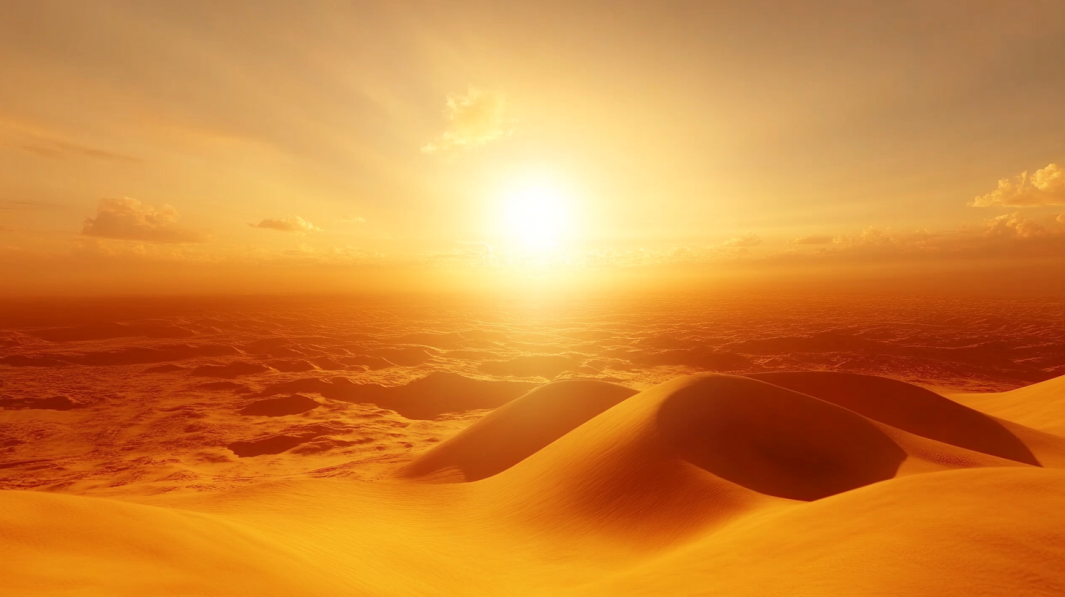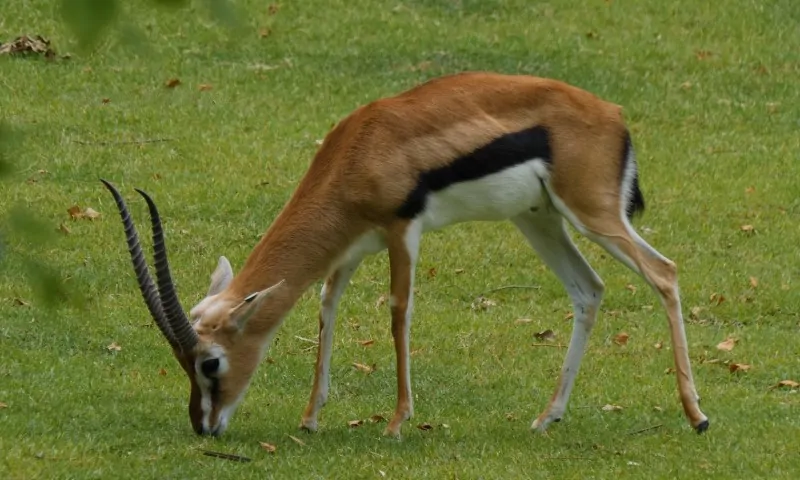The Arabian Desert, a vast expanse in West Asia, stretches across a staggering 2,330,000 square kilometers, making it the largest desert in Asia.
Its diverse landscape, from the rolling sand dunes of the Rub al Khali to the ancient petroglyphs scattered across its rocks, offers a glimpse into nature’s marvels and human history.
Covering nearly the entire Arabian Peninsula, the Arabian Desert is home to a unique array of flora and fauna.
Adapted to endure extreme conditions, species such as the resilient camel and the hardy desert plants thrive here, illustrating the adaptability of life. Its ever-changing sand dunes, sculpted by the wind, create mesmerizing patterns that never fail to astonish visitors.
For those intrigued by ancient history, the Arabian Desert’s rock art and petroglyphs offer a window into the lives of its early inhabitants.
This art, some dating back thousands of years, speaks volumes about the connection between humans and this formidable environment.
Table of Contents
Toggle1. Vastness and Majesty

The Arabian Desert covers approximately 2.3 million square kilometers (900,000 square miles). This makes it the largest desert in Asia and the fifth largest in the world. The desert stretches from the shores of the Red Sea in the west to the Persian Gulf in the east, encompassing a diverse yet arid landscape.
Its vast expanse includes the Rub’ al Khali, also known as the Empty Quarter, which is the largest continuous sand desert in the world. This immense arid region is characterized by its sandy, rocky, and gravelly plains, creating a dramatic and varied terrain. The sheer size of the desert makes it a formidable and captivating landscape that stands out among the world’s deserts.
Visible from Space
The Arabian Desert’s extensive reach makes it easily visible from space. Satellite images distinctly capture its vast, barren expanse, highlighting its prominence on the Arabian Peninsula. The desert’s enormous size and unique features, such as the massive sand dunes and rocky outcrops, are evident even from the high vantage point of space.
Astronauts aboard the International Space Station frequently photograph the desert, emphasizing its striking presence. The visibility of the desert from space underscores its monumental scale and enduring majesty, making it a remarkable feature of the Earth’s geography.
2. Ecological Significance
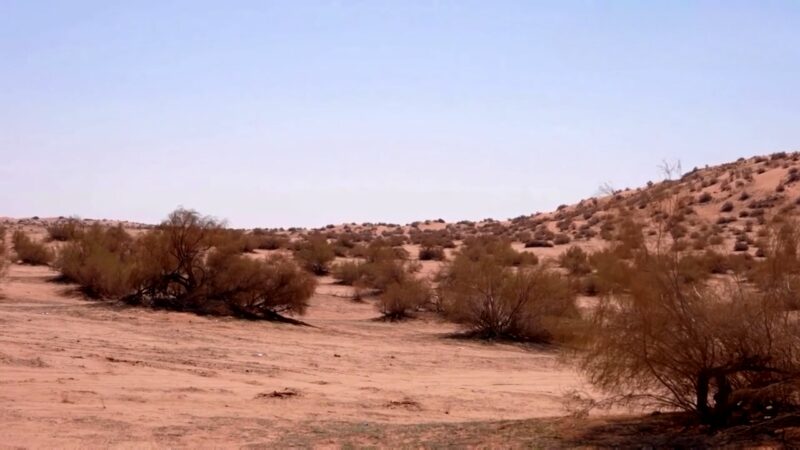
The Arabian Desert encompasses a variety of ecosystems, each with distinct characteristics. Sand dunes, rocky plateaus, and salt flats are just a few examples. These environments host a range of flora adapted to extreme conditions, from drought-resistant shrubs to salt-tolerant plants in saline areas.
Wetlands, known as “sabkhas,” provide crucial habitats for migratory birds. Seasonal rainfalls can transform these areas, creating temporary freshwater habitats. The landscape also supports oases, offering both human settlements and wildlife a rare source of water and vegetation.
Unique Wildlife
The diverse habitats of the Arabian Desert are home to a variety of unique wildlife species. Adapted to harsh desert conditions, animals like the Arabian oryx, sand gazelles, and desert foxes (fennec foxes) thrive here. The oryx was reintroduced successfully after near extinction, showcasing significant conservation efforts.
Bird species like the golden eagle and houbara bustards find refuge in this desert. Reptiles, including various lizards and snakes, also play an essential role in the ecosystem. The desert’s biodiversity is remarkable, reflecting the adaptation and resilience of its wildlife in an extreme environment.
The biodiversity of the desert not only adds to its ecological significance but also emphasizes the importance of ongoing conservation efforts to maintain this delicate balance.
3. Climatic Phenomena
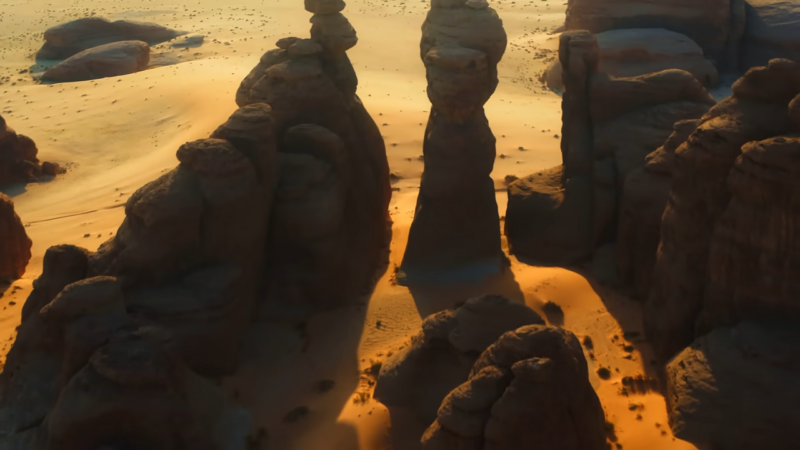
Summer temperatures often soar to as high as 130°F (55°C) in some regions. This extreme heat can pose severe challenges to both human and animal life.
While the days are blistering hot, the nights can be quite cool, especially during the winter months.
This diurnal temperature variation is characteristic of desert climates. The interior regions typically experience drier heat, while coastal areas might feel somewhat humid due to proximal water bodies.
Rare Rainfall Events
Rainfall in the Arabian Desert is scarce, with some areas receiving less than 100 mm annually. When it does rain, the events are typically brief but can be intense.
These rare downpours can lead to the sudden greening of the desert landscape, though this lush appearance is short-lived. Flash flooding is a significant risk due to the limited capacity of the desert soil to absorb water quickly. This can lead to temporary rivers that flow rapidly for a brief period before drying up again.
4. Geological Wonders
These dunes are formed primarily by the wind, which carries and deposits sand particles. Over time, these particles accumulate into large mounds that can reach heights of up to 590 feet.
Different types of dunes can be found, including linear, star, and crescent-shaped. The Arabian Desert features some of the most impressive star dunes, characterized by radiating sand ridges. The pattern and shape of these dunes are influenced by wind direction and speed, making them dynamic and ever-changing formations.
Rock Structures
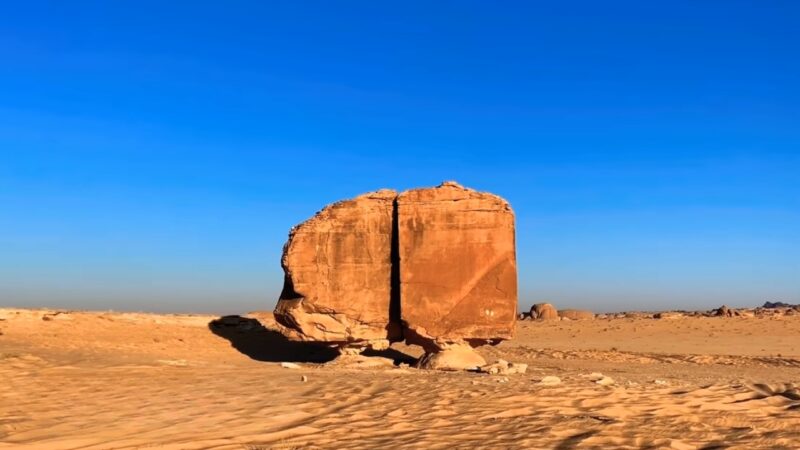
The desert is also home to fascinating rock formations, such as the Al Naslaa Rock. Located in Saudi Arabia, this formation is famous for its almost perfectly split appearance, as if cut by a laser. This geological marvel attracts scientists and tourists alike, intrigued by its precise division and the natural forces that shaped it.
Another notable formation is the Elephant Rock, which resembles an elephant with its distinctive trunk and body shape. This rock can be found in the majestic Saudi Arabian landscape and adds to the rich tapestry of the desert’s geological wonders. The Edge of the World, or Jabal Fihrayn, offers stunning cliff views, further exemplifying the geological surprises of the region.
5. Cultural and Historical Significance
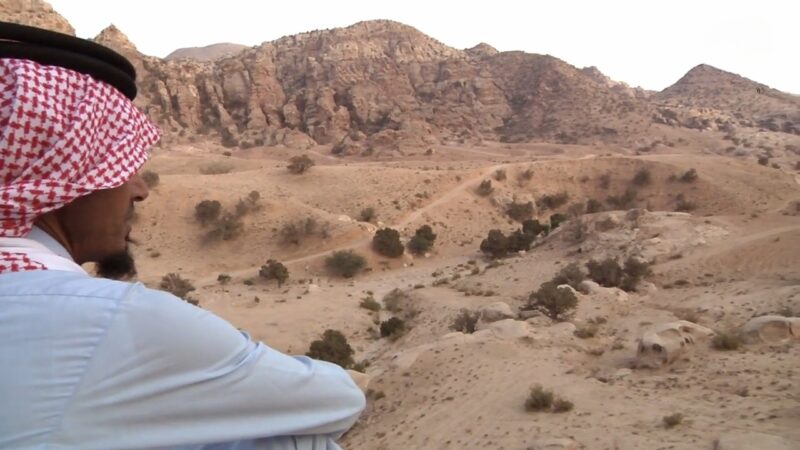
The Bedouin tribes have inhabited the Arabian Desert for over 3,000 years. Known for their nomadic lifestyle, the Bedouins moved across the desert with their camel herds, using the sparse vegetation to sustain their animals. They also practiced a form of standardized agriculture, adapting their practices to the harsh desert conditions.
Social structures within Bedouin communities were highly organized, often revolving around kinship and tribal affiliations. Their cultural practices, including poetry, storytelling, and music, provide invaluable insights into the history of the Arabian Desert.
Ancient Caravan Routes
The ancient caravan routes traversing the Arabian Desert were important for trade and cultural exchange. Notably, historic routes like the Silk Road crossed through this vast expanse, linking the Arabian Peninsula with distant regions. These routes facilitated the exchange of goods such as spices, textiles, and precious metals.
Caravanserais, or roadside inns, were established at regular intervals to provide shelter and resources for traders and their camels. These stops became hubs of cultural and economic activity, contributing to the exchange of ideas and fostering interactions among various civilizations.
6. Natural Resources
The Arabian Desert is home to some of the world’s largest oil reserves, contributing significantly to global oil production. The discovery of vast oil fields, such as the Al-Ghawar oil field, has made the region one of the wealthiest globally. Al-Ghawar alone spans over 3,200 square miles and produces millions of barrels of oil per day.
These petroleum reserves have transformed the local economies, creating immense wealth and driving infrastructure development. The presence of oil has also led to significant geopolitical importance, making the Arabian Desert a key player in the global energy market.
Mineral Wealth
Beyond oil, the Arabian Desert is rich in various minerals. It hosts deposits of phosphates, which are essential for agriculture and are found mainly in the northern parts. The desert also contains significant quantities of gold, silver, and copper, contributing to the mining industry.
The discovery and extraction of these minerals have supported economic diversification efforts, reducing reliance on petroleum. Mining activities have provided employment opportunities and spurred technological advancements. This mineral wealth underscores the Arabian Desert’s role as a critical resource-rich area in the world.
7. Conservation Efforts

For example, the Sharaan Nature Reserve has been established to protect significant natural habitats. This reserve covers ecologically valuable landscapes, aiming to maintain the balance of biota and the desert environment.
Another key site is the Farasan Islands, known for their unique biodiversity. The islands are home to over 230 species of fish and various coral reefs. These areas are managed to support both terrestrial and marine life conservation.
Under the Saudi Green Initiative (SGI), Saudi Arabia has committed to protecting 30% of its terrestrial and marine areas by 2030. This ambitious goal focuses on emission reduction, afforestation, and land and sea conservation.
Sustainable Tourism
Promoting sustainable tourism is essential for the conservation of the Arabian Desert. Tourist activities are designed to minimize environmental impact while maximizing educational and cultural experiences. For instance, eco-friendly tours are encouraged, highlighting the significance of conservation in the region.
Local governments and organizations promote the development of environmentally friendly accommodations and practices. These initiatives aim to reduce the carbon footprint of visiting travelers and ensure that tourism activities do not disrupt local wildlife or habitats.
Efforts include educating tourists on the importance of conservation, guiding them to respect natural environments, and supporting local conservation projects. Sustainable tourism strategies help maintain the integrity of the desert ecosystems while providing economic opportunities for the local communities.
Related Posts:
- How to Be a Responsible Pet Owner While Exploring…
- Derpy Snake of the Dunes - Arabian Sand Boa
- Why We Must Protect the Sahara Desert Cheetah at all Costs
- Why Do Dogs Love to Roll in Smelly Things? 7 Things…
- Why Camels Eating Snakes Might Not Be as Strange as It Seems
- Is Your Pet Sick? Here’s Why You Shouldn’t Rely on…

